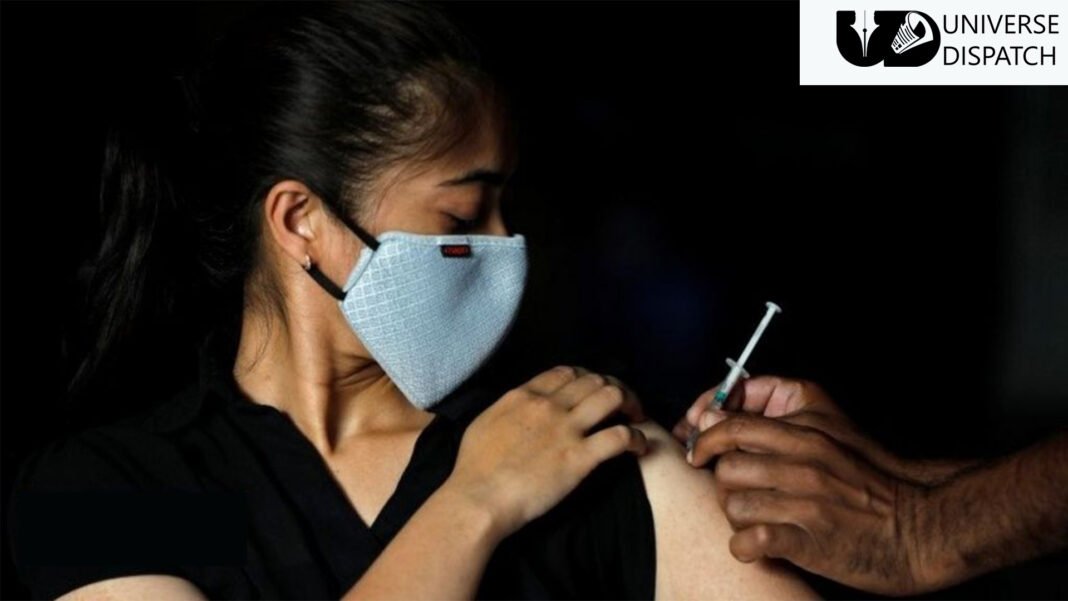India scale up vaccines as daily cases hit 1,00,000
India daily cases: India has stepped up its coronavirus vaccination drive between a deadly second wave of infections. The country on Sunday breached the 1,00,000 daily caseload mark for the first time since the pandemic began. Moreover, everyone above the age of 45 is now eligible for the jab. Some states are also targeting specific groups like bank workers and lawyers. Nearly 80 million doses have been given so far, mostly to frontline workers and people above the age of 60.
The northern states of Uttar Pradesh have announced that it will run special vaccination drive for journalists, bank employees, and lawyers. Nearby Uttarakhand state is also planning a similar targeted drive. The world’s biggest inoculation drive aims to cover 250 million people by July. But experts say the pace needs to pick up further to meet the target.
On the other side, the third phase – which began on 1st April opened between a sharp uptick in COVID-19 cases. On Sunday, India became the second country after the US to report 1,00,000 new cases in a single day. More than half of those are confirming in Maharashtra, which has India’s largest city Mumbai as its capital.
India’s caseload has dropped sharply by the time it began vaccinating people early this year. It was adding under 15,000 infections daily. But cases began to spike again in March, largely driven by poor test-and-trace and lax safety protocols. Experts say India’s second wave is fuelling by people being less cautious and mixed messaging by the government.
Because the pandemic began, India has confirmed more than 12 million cases and over 1,65,000 deaths. It’s the third-highest number of COVID-19 infections in the world after the United States and Brazil.
How is the rollout going?
India launched its vaccination drive on 16th January, but it is limiting to healthcare workers and frontline staff – a sanitation worker became the first Indian to receive the vaccine. From 1st March, the eligibility criteria were expanded to include people over 60 and those who are between 45 and 59 but have other illnesses.
Moreover, the third phase of its vaccination drive with everyone above the age of 45 eligible for the jab was launching on 1st April. The country’s drug regulator has given the green light to two vaccines one developed by AstraZeneca with Oxford University and one by India Bharat Biotech. Several others candidates are at different stages of trials.

India also wants to scale up the drive quickly to stem the recent spike in cases. While it recently placed a temporary hold on all exports of the Oxford AstraZeneca coronavirus vaccine which is being made by India’s largest vaccine manufacturer, the Serum Institute of India (SII).
Bhramar Mukherjee, a professor of biostatistics and epidemiology at the University of Michigan. While India needed to administer 10 million shots daily “instead of being complacent with 3 million doses a day”.
How many have been vaccinated so far?
Nearly 80 million doses of coronavirus vaccines have been administered so far. More than 60 million people have received one dose, and over 10 million people have been fully vaccinated after receiving two doses. Now India has been running one of the world’s largest immunisation programmes that vaccinate tens of millions including newborns and pregnant women, against various diseases.
While experts believed India was well-preparing for the challenge. But the uptake has been slow because of vaccine scepticism as well as a lack of awareness among the poor or in rural areas. Many of the poor have little information on how to register themselves and access the vaccine free of cost.
Online registration could be an impediment for those who don’t own phones or use the internet. There’s very little public health communication for the poor and the working class regarding the vaccines, says Radha Khan. An independent consultant working in the field of gender, governance and social inclusion.
The government aims to use up to 500 million doses to cover 250 million “priority people” by the end of July. Actively, in some states, more women than men have been vaccinated. The reasons are not clear.
Who is paying for the vaccines?
Vaccination is voluntary. State-run clinics and hospitals are offering free jabs but people can also pay 250 rupees a dose at private facilities to get vaccinated.
However, the government is spending around $5bn for free doses at state-run clinics, public health centres and hospitals. While it has also bought millions of doses of two approved vaccines and provided funds to states for their vaccinations programmes.
Have there been ‘adverse events’ after vaccination?
Moreover, vaccines come with side effects for some people. India has a 34-year-old surveillance programme for monitoring such ‘adverse events” following immunization. Experts say a failure to transparently report adverse effects could easily lead to fear-mongering around vaccines.
Until early February, India reported 8,483 adverse events after vaccination. Most of these events were “minor” – anxiety, vertigo, giddiness, dizziness, fever, and pain, and all patients had recovered, the government said.
On the other side, the surveillance programme has examined 412 cases of “severe adverse events. Including 79 deaths after vaccination” until 13th March, as per the senior official. While it found the deaths happened in cases where the person had underlying conditions, including heart problems, high blood pressure and diabetes.




